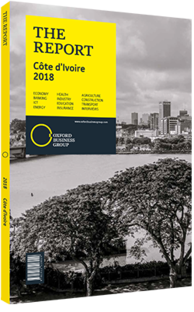UEMOA Debt Market: Bonds
The UEMOA bond market remains one of the primary sources of internal funding for UEMOA states, with the government bonds market totalling some CFA2.368trn (€3.6bn) and representing 89% of the overall outstanding amount at the end of 2016.
These figures reflect the strong demand for long-term debt among UEMOA states in their endeavours to finance their budget deficits.
Moreover, government bonds worth CFA1.043trn (€1.6bn) were issued in 2016 with the purpose of funding infrastructure programmes. These were 75% focused on long-term maturities of 10-12 years, with interest rates ranging from 5.9% to 6.5%.
Market Capitalisation
On the secondary market, capitalisation passed the CFA2trn (€3bn) mark to hit CFA2.509trn (€3.8bn) in 2016, a 59% increase compared to 2015. This growth could mainly be explained by the listing of 12 new bond lines, including five Islamic bonds (sukuk), for a total amount of CFA1.487trn (€2.2bn). It also resulted, by the same token, in an increase of 84% in the traded value to CFA100.04trn (€150bn) in 2016, up from CFA54.41trn (€81.6bn) in 2015.
Sukuk
In 2014 sukuk were introduced to the debt market. Generally issued by majority-Muslim countries and sharia compliant, sukuk are being increasingly used by non-Muslim-majority countries to fund infrastructure projects. That is the case for some UEMOA states, such as Senegal, which launched its first sukuk in 2014 for CFA100bn (€150m). This issue was very successful with local investors, although it was intended to diversify sources of funds, as well as to attract Arab countries as investors.
Côte d’Ivoire was the second UEMOA country to introduce this financial instrument, raising CFA150bn (€225m) in 2015. In 2016 Togo, Senegal and Côte d’Ivoire raised a total of CFA516bn (€774m) with sukuk with maturities of seven and 10 years, against four and five years in the first two issues.
Monetary Market Issue
The low cost of refinancing through the Central Bank of West African States (Banque Centrale des Etats de l’Afrique de l’Ouest, BCEAO) was an incentive for commercial banks to use the refinancing window to strengthen their exposure on government bonds.
This borrowing facility has loosened the constraints on government funding, leading to an increase in budget deficits throughout the region. The UEMOA deficit as a percentage of GDP stood at 4.1% in 2015 and 4.4% in 2016, up from 3% in 2014, while the target is 3% by 2019.
In December 2016 the monetary authorities announced an upward revision of the interest rate at the marginal lending window from 3.5% to 4.5%, and set more stringent requirements for banks for refinancing, with a maximum of double their equity.
This change in policy immediately resulted in a drying up of liquidity for commercial banks, making it more difficult for governments to raise funds in 2017. Therefore, despite a reduction in banks’ reserve requirement (from 5% to 3%) in March 2017, an increase in interest rates and a drop in recently issued bonds and Treasury bills’ maturities, the latest government issues have not been fully subscribed. As a result, states have returned to the international market, for example Côte d’Ivoire, which issued a new eurobond in June 2017.
Outlook
The increase in the marginal rate and the restriction on the level of refinancing compel banks to maximise their yield rate on available resources by going on to debts that offer higher returns. This has resulted in higher yields on the debt market, on both the money and financial markets. Indeed, with the drying up of liquidity on the market, states are forced to pay higher yields on their issues.
Therefore, the level of yields – which has been falling since 2013 – should rise in the coming years, pending a change in the BCEAO’s monetary policy.
You have reached the limit of premium articles you can view for free.
Choose from the options below to purchase print or digital editions of our Reports. You can also purchase a website subscription giving you unlimited access to all of our Reports online for 12 months.
If you have already purchased this Report or have a website subscription, please login to continue.

